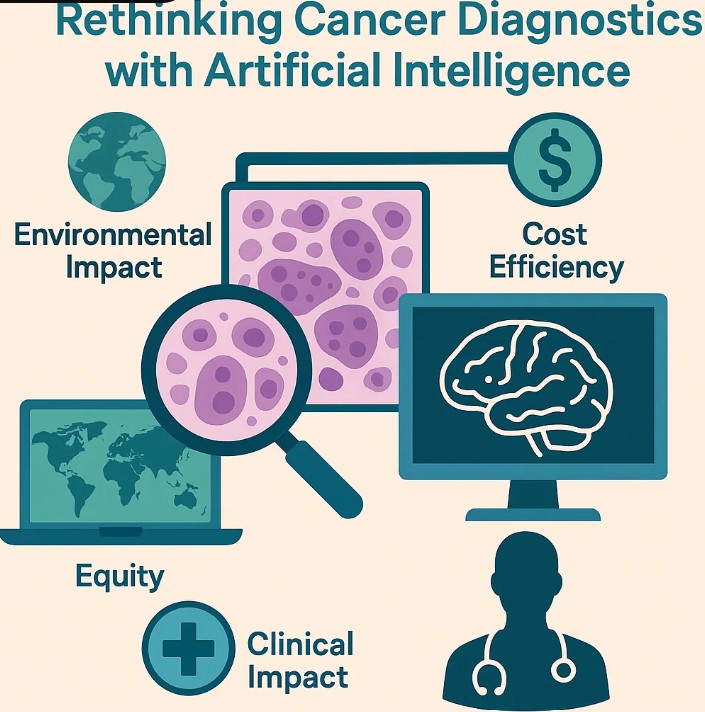This is a guest blog post from one of the DigiSus seed funded projects, “Towards Sustainable and Equitable Cancer Diagnostics with AI-based Profiling of Tumor Microenvironment”.
Understanding the Problem: Diagnostics Are Not Equal
Cancer diagnosis is at a crossroads. Modern diagnostic tools like multiplex immunofluorescence (mIF) provide unparalleled detail about the tumor microenvironment (TME)—the rich ecosystem of immune and cancer cells surrounding the tumor. This level of information is crucial for planning personalized therapies, especially for targeted treatments and immunotherapies.
But there’s a catch. These methods are expensive, resource-intensive, and heavily reliant on costly reagents, high-end imaging equipment, and expert interpretation. This makes them inaccessible in many parts of the world, reinforcing a divide between those who receive effective care and those who do not. They are also environmentally unsustainable, producing lab waste and requiring energy and manpower for implementation.
The DigiSus Solution: AI-Powered and Sustainable
Our project, Towards Sustainable and Equitable Cancer Diagnostics with AI-based Modelling of Tumor Microenvironment, aims to solve this inequity and inefficiency. We are building an AI-powered diagnostic tool that analyzes standard hematoxylin and eosin (H&E)-stained tissue slides—the universal backbone of pathology—rather than relying on specialized mIF.
In practice, this means that once trained, the AI can analyze a routine pathology slide and deliver rich, actionable insights within seconds—without any additional reagents, equipment, or specialist input.
Why This Matters
This project advances digitalization and sustainability in equal measure:
- Environmental Impact: No toxic reagents, no need for disposable lab materials, and no high-energy imaging equipment.
- Cost Efficiency: H&E staining is routine and cheap. By eliminating the need for expensive antibody panels, the cost of diagnostics is significantly decreased.
- Equity: Remote and resource-limited settings can now access high-level diagnostics. All you need is a scanner and internet access.
- Clinical Impact: Faster turnaround and deeper insight enable earlier and better treatment decisions—saving lives and cutting costs.
***
About the Author
Maryam Mohammadlou is a PhD researcher in the Cancer Regulation and Immunology research group, led by Adjunct Professor Kirsi Rautajoki at the Faculty of Medicine and Health Technology, Tampere University. Her research focuses on developing AI-powered solutions for digital pathology. She is currently collaborating with the Computational Pathology group at Radboud University Medical Center (Radboudumc) in the Netherlands, working on sustainable diagnostic tools for cancer.


